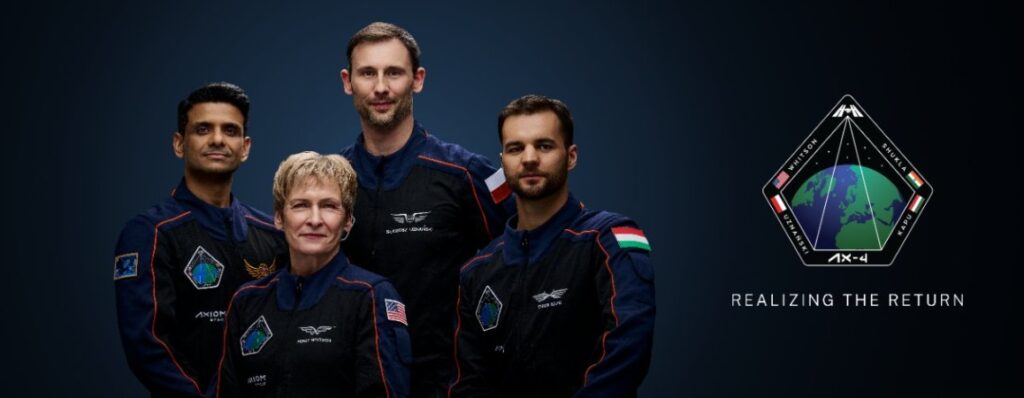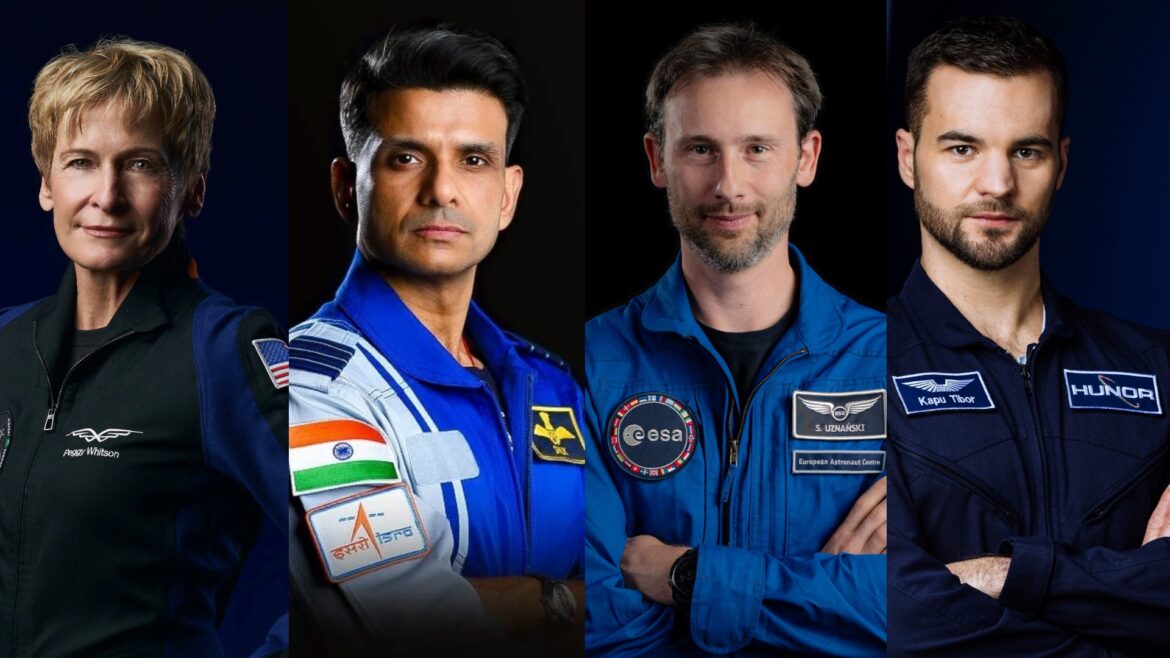Group Captain Shubhanshu Shukla’s historic return from the International Space Station (ISS) on July 15, 2025, marked a defining moment in India’s space journey. He became the first Indian to live and work aboard the ISS and only the second Indian to travel to space. Shukla’s mission marked the beginning of a new era in international space collaboration, strategic in its intent and symbolic in its impact. It represents a clear geopolitical milestone.
As New Delhi prepares for the next Quad Leaders’ Summit, India’s space diplomacy is stepping boldly into the Indo-Pacific spotlight, moving “from dialogue to delivery,” as U.S. Secretary of State Marco Rubio said during the Quad Foreign Ministers Meeting on July 1, 2025, in Washington DC. The meeting reaffirmed that technology partnerships are central to the Quad’s Indo-Pacific vision.
India–US: Axiom-4 and the Gaganyaan Launchpad
Shukla’s journey was part of Axiom Mission 4 (Ax-4), a privately operated mission organized by Axiom Space in partnership with National Aeronautics and Space Administration (NASA), European Space Agency (ESA), Indian Space Research Organization (ISRO), and SpaceX.

A key highlight of Axiom-4 was the collaboration between NASA and ISRO, fulfilling a bilateral commitment announced by President Donald Trump and Prime Minister Narendra Modi to send the first ISRO-affiliated astronaut to the ISS. According to a NASA press release, the two space agencies conducted five joint scientific investigations and two in-orbit STEM demonstrations during the mission. NASA noted that it shares a long-standing relationship with ISRO, built on a mutual vision to advance scientific knowledge and expand space collaboration.
Shukla’s participation in Axiom Mission 4 was sponsored by the Government of India, specifically through ISRO, as part of preparatory activities for Gaganyaan, India’s upcoming human spaceflight program, as noted by the Press Information Bureau (PIB).
According to ISRO, the mission will help inform Gaganyaan’s future crewed flights by enhancing understanding of the body’s response to prolonged microgravity, coordination during emergencies, and the management of sleep cycles, muscle loss, and mental health in space.
According to PIB, India invested approximately ₹600 crore (around USD 72 million) in the mission, covering astronaut training, mission costs, payload design, and related logistics. The investment is comparable to the amount spent on Chandrayaan-3, India’s lunar mission that successfully landed near the Moon’s south pole, showcasing the country’s strong commitment to advancing human spaceflight capabilities.
India–Australia: Operational Ties and Crew Recovery Support
India’s spaceflight future is now also anchored literally, in the Southern Hemisphere and India’s participation in the mission, via Axiom‑4, also gains wider relevance given the growing India‑Australia space cooperation. Australian Space Agency (ASA) and ISRO signed an Implementing Arrangement (IA) to support crew recovery operations for India’s upcoming Gaganyaan human spaceflight program, according to the official statements released by ASA. This agreement signed on Nov 21, 2024, marks a new phase of Australia India Space collaboration.

Gaganyaan aims to demonstrate human spaceflight capability to low Earth orbit in an Indian crew module. The mission will carry up to three crew members for a duration of up to three days, followed by safe recovery. Under the IA, Australia could provide support for emergency crew recovery and capsule retrieval in its surrounding maritime region.
According to ASA, “Australia and India are enduring strategic partners in space,” and both agencies are committed to exploring further collaboration opportunities. The deepening ties were also highlighted in the Joint Leaders’ Statement at the 2nd Australia–India Annual Summit, where Prime Ministers Anthony Albanese and PM Modi noted:
“The Prime Ministers welcomed the growing space partnership between the two countries, both at space agency and space industry levels. Cooperation to support the Gaganyaan missions, the planned launch of Australian satellites onboard an Indian launch vehicle in 2026, and joint projects between our respective space industries exemplify this deepening collaboration.”
India–Japan: LUPEX Mission and Quad Space Alignment
According to a statement released by the Ministry of Foreign Affairs (MOFA) of Japan, the third India–Japan Space Dialogue was held in Tokyo in April 2025, bringing together officials from ISRO, the Japan Aerospace Exploration Agency (JAXA), and both governments to discuss space policy, bilateral cooperation, space situational awareness, Quad space coordination, and industry-level partnerships. The dialogue also marked the official launch of the 2025–26 India–Japan Science, Technology, and Innovation Exchange Year.
As outlined by MOFA, Japan, ISRO and JAXA are collaborating on the Chandrayaan-5 / Lunar Polar Exploration (LUPEX) mission, with ISRO developing the lander and JAXA responsible for the rover. During the dialogue, both sides agreed to explore joint activities under the Quad Space Working Group, including the use of scientific data from India’s Aditya-L1 solar mission and the Chandrayaan-3 lunar mission.
Historic Parallels: 41 Years Since Sharma’s Mission
India’s space journey, famously born in the 1960s when satellites were transported on bicycles and bullock carts, is well documented in ISRO and government archives. In 1975, Aryabhata became India’s first satellite in orbit. Then in 1984, Wing Commander Rakesh Sharma became India’s first space traveler, journeying aboard a Soviet Soyuz spacecraft, a mission etched in national memory and noted by ISRO’s Human Space Flight Centre. Sharma famously described India as “Sare Jahan Se Accha” from space, a phrase that continues to echo across generations.
Since then, India has sent a probe to Mars, landed near the Moon’s South Pole, and is preparing for its first human spaceflight under the Gaganyaan mission by 2027. The roadmap ahead, as announced by Prime Minister Modi in October 2023, includes establishing an Indian space station by 2035 and launching a crewed Moon mission by 2040.
Born just a year after Sharma’s historic flight, Shukla’s journey reflects how far India has come in its space ambitions. According to Shukla, Sharma remains in close contact with him and continues to advise the Gaganyaan team.
As Shukla prepared to re-enter Earth’s atmosphere, he shared an emotional message:
“Forty-one years ago, an Indian went to space and told us how India looks from space. And I am sure all of us want to know how India looks today. Today’s India looks ambitious, fearless, confident, filled with pride. And I still say – Sare Jahan Se Accha!”
A patriotic phrase rooted in unity and cultural pride, Shukla’s words captured the breathtaking view of his homeland and India’s rising place among the stars.
Looking Up, Together: Why This Matters for Quad
Together, these developments underscore a strategic convergence between India’s human spaceflight ambitions and the Quad’s broader Indo-Pacific framework. While Quad was initially focused on maritime security and disaster relief, its evolution has embraced critical and emerging technologies, space being central among them.
The Quad Space Working Group, launched in 2022, laid the groundwork for data-sharing and satellite tracking across the four nations. India’s participation in missions like Axiom-4, and its operational alignment with Australia and Japan, show how this group is now translating vision into infrastructure—from lunar exploration to crew safety and orbital cooperation.






